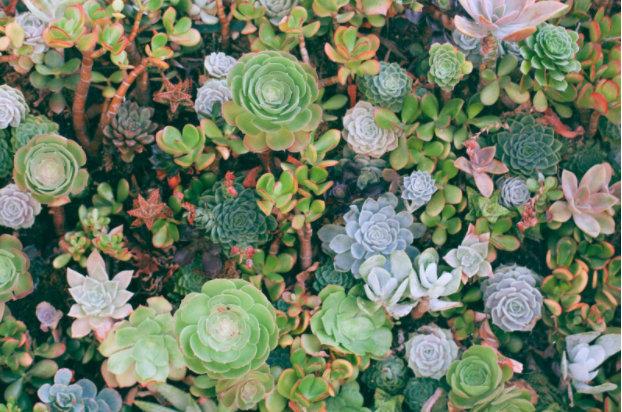Brighten up Your Garden: Ideal Plants to Grow in Your Garden
Summer is approaching, which means things are heating up, and your garden will need some additional attention. Gardeners often believe that weekends are their only chance to enjoy planting for a long time. However, if you put in an effort, various plants with a drought and heat tolerance start cultivating for summer.
Most people love to spend more time in their garden throughout the summer. A colorful garden in your home will give a beautiful background, especially when having a party or even a typical family dinner. Are you thinking about how to brighten up your garden? Begin cultivating by introducing these colorful plants that you can grow in your garden.
Succulent
Succulents thrive in warm temperatures and create good compliments to xeriscapes, which need little watering. Keeping succulents in your house assists in removing pollutants from the surroundings and maintaining fresh and clean air. Plants collect human respiratory waste or also known as carbon dioxide, and transform it into plant carbohydrates. And produce pure, life-giving oxygen.
Furthermore, take into account to divide your own succulents. Once succulents have grown out of their containers, it’s about time to split the succulents plant. Whereas a succulent is replanted and divided best in spring, you may do it at all times of the year. If feasible, choose a pleasant day to do it outdoors. Succulents that have sprouted new foliage should be divided. However, do not try to divide it into a single plant.
Succulents like sunlight and need around six hours of light daily; it depends on various succulents. Succulents may sear in direct sunshine, so bring them to sun exposure gently or give shade with a transparent curtain. Succulents are very adaptable and may be used in several garden features to create additional decor for your garden.
Dahlia
Dahlia, considered one of the favorites in the world of cut flowers, has their unique charm: festivals, clubs, and organizations commemorate and appreciate these beautiful stems. Dahlias, on the other hand, are not especially difficult to cultivate with a bit of care. Dahlias require a lot of sunlight, fertilizer, and water around the season to blossom abundantly. Tall kinds must also be staked, although smaller types may leave out this step.
Dahlias are classified according to their bloom kind and size. There may still be many cultivars and hybrids in each type; however, it is helpful to arrange them. Dahlia varieties are classified based on blossom form and size. Dahlias can have a significant aesthetic effect on your garden.
Zinnia
Zinnias are practically available in every shade, excluding blue, and they come in a range of heights. Zinnia’s flowers may resemble dahlias or daisies and other things. You may grow them under the sun and give them adequate air ventilation, which helps in disease prevention.
Zinnias are simple to cultivate and may be immediately sown into the garden. In addition to its stunning garden display whenever you need a touch of color. Many zinnia types may survive in a vase for seven to twelve days.
Marigold
Marigolds are almost maintenance-free when it comes to flower cultivation. Wait till the spring frosts have passed before planting their seeds. They will tolerate nearly any sort of cover; however, it is preferred to a well-balanced soil. Marigolds bring bright flowers that can add an appealing view to your garden.
Marigold lovers often get the seeds in boxes. Cover the plant seeds with a thin layer of soil, keep the soil moist, and root out some of the sources as necessary. And you will receive vivid blooms that will last until autumn in return for this little effort.
Marigolds come in various sizes and have different colors; orange, red, white, yellow, and other color combinations. Marigolds are often planted in and around vegetable plots since some people think they repel pest insects.
Viola
Violas are often cultivated yearly, and they are cold-tolerant. Its small stature and free-blossoming habit make them ideal for container or pot gardening. Violas have various bright colors such as orange, yellow, purple, white, and lavender, giving attractions to your garden.
Violas prefer a lot of sun in the early summer and springtime. However, they struggle in hot weather. A perfect location would receive full sun before the trees completely leaf out and dotted shadow throughout the summer.
Snapdragon
Snapdragons will attract butterflies to your garden. The plants produce many flowers and can withstand the typically lousy weather in the autumn and spring. Snapdragons bloom best in wet soil, well-drained, and in early summer or cold late spring weather. The plants can withstand partial sun; however, they will thrive much better in full shade.
Snapdragons are adaptable plants with several varieties that can be found in practically any garden. Snapdragons come in various flower colors, foliage colors, and floral types that will indeed create a good view of your garden.
Takeaway
Discovering new plants and incorporating them into your garden is part of the fun of gardening. Being in a garden full of plants and flowers that you grow is an achievement for some reason. It will create a relaxing mood and ambiance of the place. There is nothing you can’t plant as long as you want and enjoy gardening.



